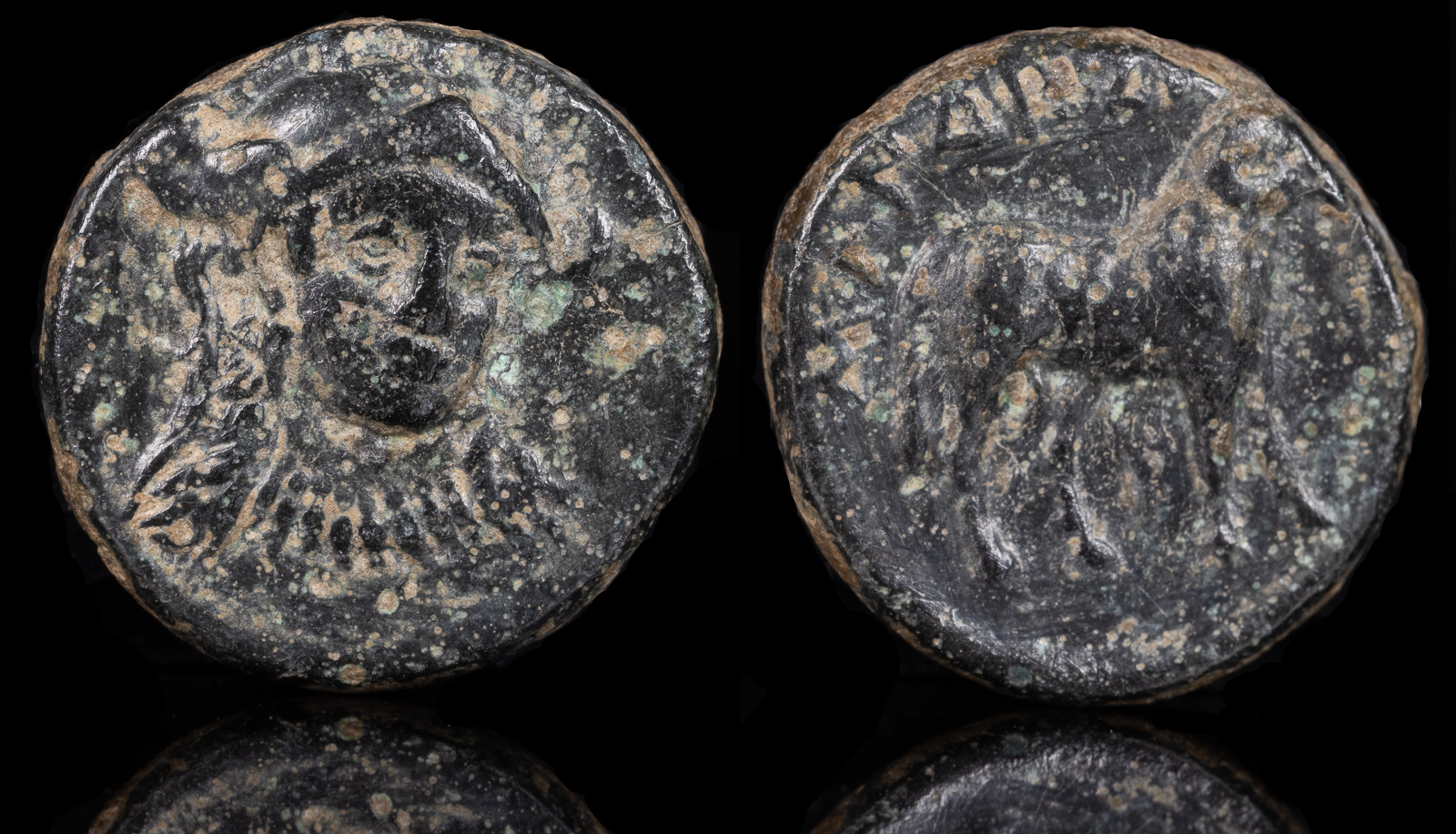
Ionia, Klazomenai
mid-late 4th century BCE
Æ 11mm, 1.73g, 12h
Mandronax, magistrate
Head of Athena, wearing triple crested helmet, facing slightly r.
R/ Ram standing r.
SNG Copenhagen 81
Ex London Ancient Coins
Klazomenai was originally two cities. The original Klazomenai was built on an island off the coast of Ionia. Later, the city of Chyton was built on the mainland. The two didn’t always get along, but they were eventually joined when Alexander the Great built a causeway between them, which can still be seen.
The main god of Klazomenai was Apollo, who was driven by a chariot of swans, which were common in the area. However, this coin depicts Athena, and that was likely due to the city’s connection with Athens, on whose side it was during the Peloponnesian War.
The city’s name is believed to come from the word ‘klazo’, which is the sound the swans made. Since these were Greek swans, they must have spoken some of the language.
The site has been inhabited since very ancient times, and there is archeological evidence from at least 3200 BCE. However, the Greek city was founded by settlers from Kolophon. The famed philosopher Anaxagoras of Klazomenai was from here.
Abdera begun as a colony of Klazomenai.
Alyattes of Lydia takes Smyrna, then attacks but fails to take Klazomenai.
The philosopher Anaxagoras is born in Klazomenai.
Peace of Antalkidas, arranged by Artaxerxes II, is signed in Susa, ending the Corinthian War. Abydos, Aigai, Kalchedon, Kaunos, Klazomenai, Kyzikos, Parion, Samos, and Adramytteion become part of the Persian Empire.
Lysimachos convinces Teos and Kolophon to surrender, but Klazomenai and Erythrai are reinforced by Antigonos and are not taken.